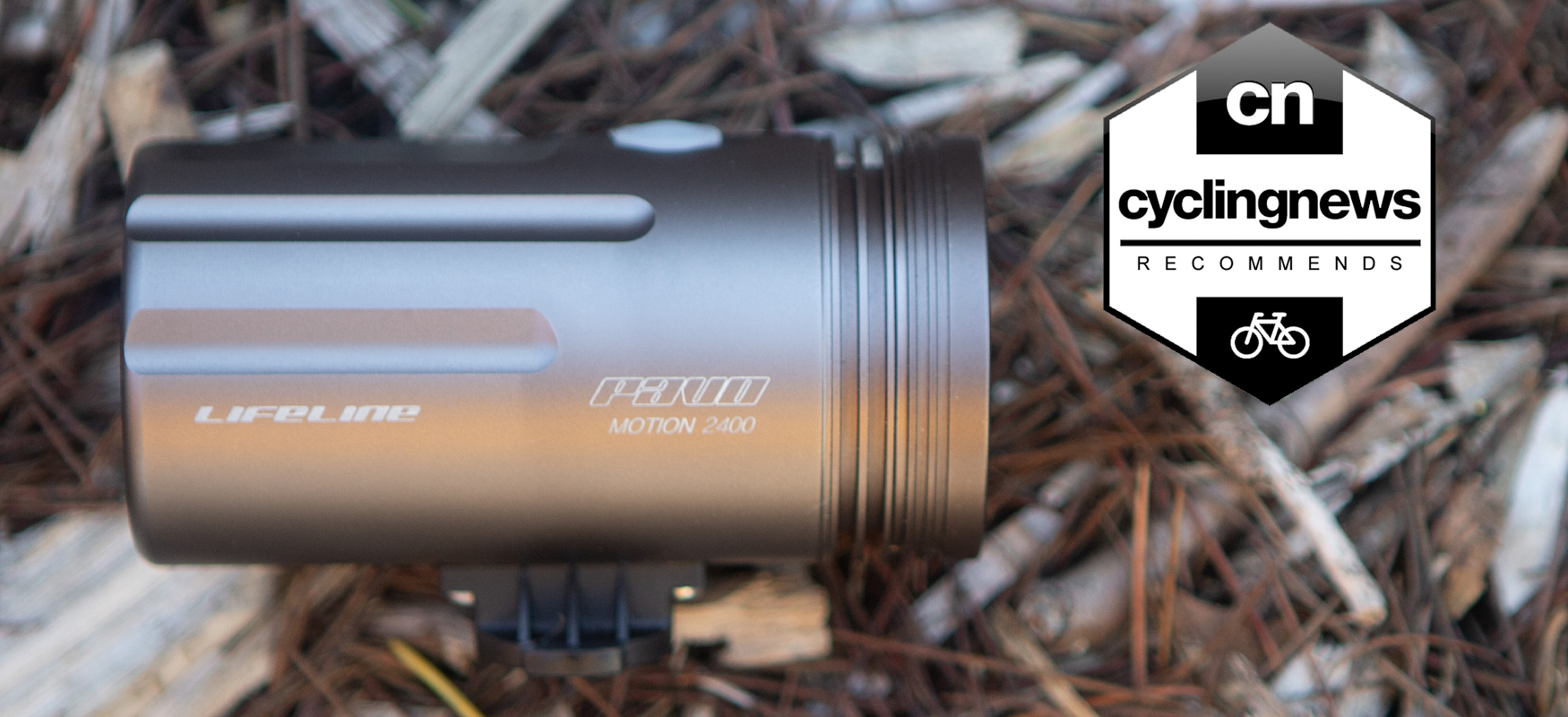Cyclingnews Verdict
Super bright when needed with tons of battery life at lower power. Perfect for riding through the night and a capable commuting option
Pros
- +
Possible to charge while turned on
- +
Motion control mode halves power when stopped
- +
Inexpensive for the lumens
Cons
- -
Can be difficult to turn off the light if mounted upside down
- -
Low quality mount
- -
Micro-USB charging
You can trust Cyclingnews
There are a lot of different options available when it comes to the best bike lights. For some, day-time visibility to other road users is the primary concern, while others require a bike light to see where they're going at night or in low-light situations. The Lifeline Pavo Motion 2400 front bike light fills the needs of the latter.
We spent time testing it to see if the excellent pricing matches with excellent performance, and explored its strengths and weaknesses. Keep reading if you are considering adding it to your next night-time ride.
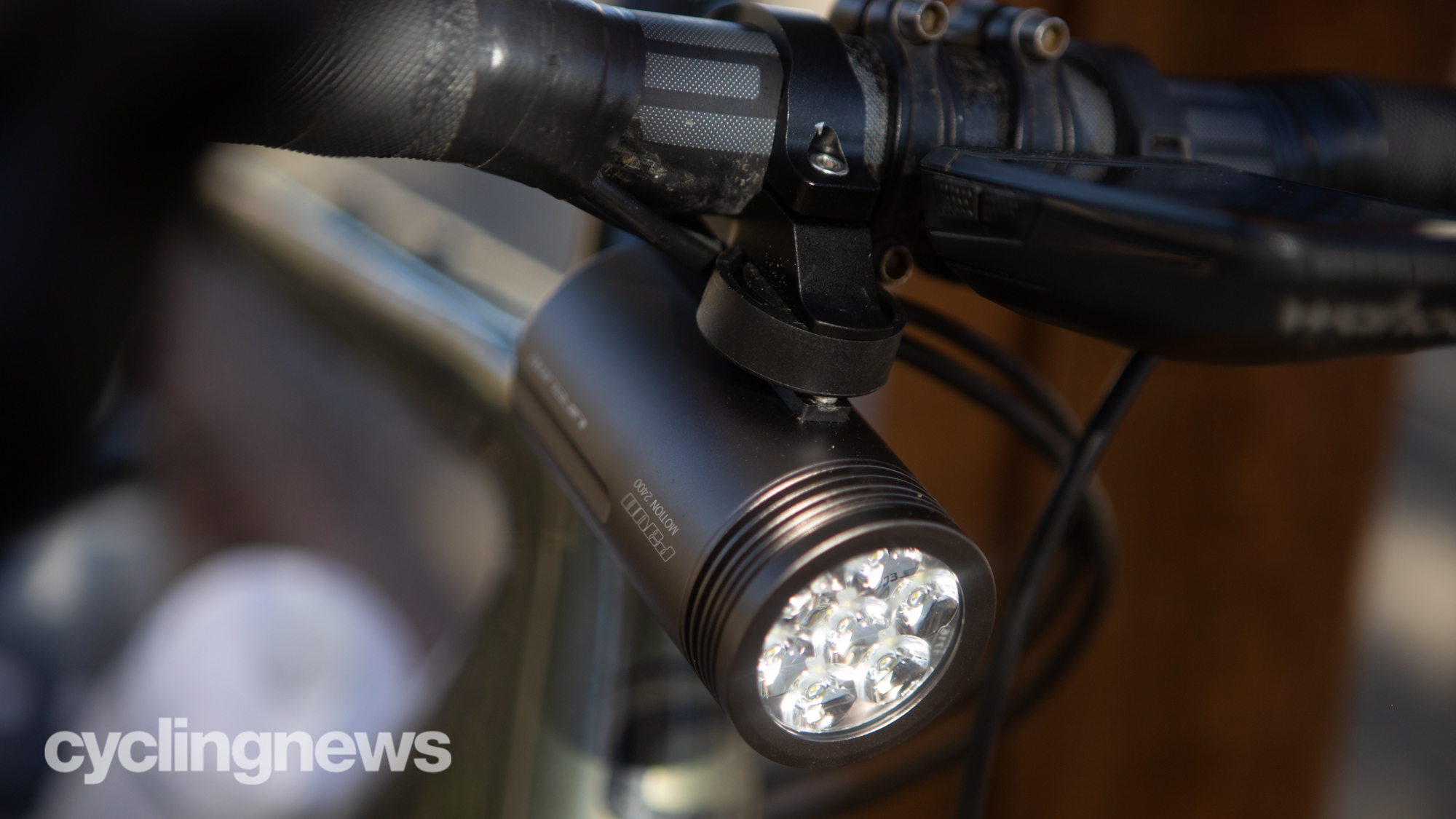
Design and aesthetics
The Lifeline Pavo Motion 2400 takes on simple cylinder-like form built almost entirely from anodised 6061 aluminium. From tip to tail, it's a monochromatic gunmetal grey that's only broken by a few small details such as the series of heat-reducing rings on the front sections. Measuring 9.5cm in length, there's a micro-USB charging port, and rubberised cover at the rear, while seven LED units take up residence behind a glass lens at the front. At the top, about a quarter of the way back, you'll see the only button. It's frosted and rubberised and glows either blue or red depending on the mode the light has been set to. A soft blue glow indicates constant mode while red indicates Motion Control mode.
When in the Motion Control mode, the light uses an onboard gyroscope to sense movement. It's only in this mode that the full 2,400 lumens are accessible, however, there are also two other brightness options available, plus two flashing modes. The arrangement is Mode 1 MC = 2,400L / 1,200L, Mode 2 MC = 1,200L / 600L, Mode 3 MC = 600L / 300L, then the two flashing modes which differ only in the length of the flashes. If you've chosen one of the constant modes, when the bike stops moving, the light will slowly dim to the lower output.
If you'd rather not use the Motion Control mode, then holding the power button will toggle to constant mode. In constant mode you've got a choice of four brightness modes: High = 100% / 2,000L, Medium = 50% / 1,000L, Low = 25% / 500L, and Saving Mode = 10% / 200L. Switching power output in both Motion Control and Constant modes only requires a single button press.
At the base of the light is the mounting hardware. Attached to the light you'll find a small plastic circle with two tabs that fit into a matching pattern in the mount, tightened via a quarter-turn paradigm. The part of the mount that circles the handlebars is aluminium and secures with two hex-head screws that tighten in opposite directions. Tighten one from below and one from above and alternate between the two for even pressure.
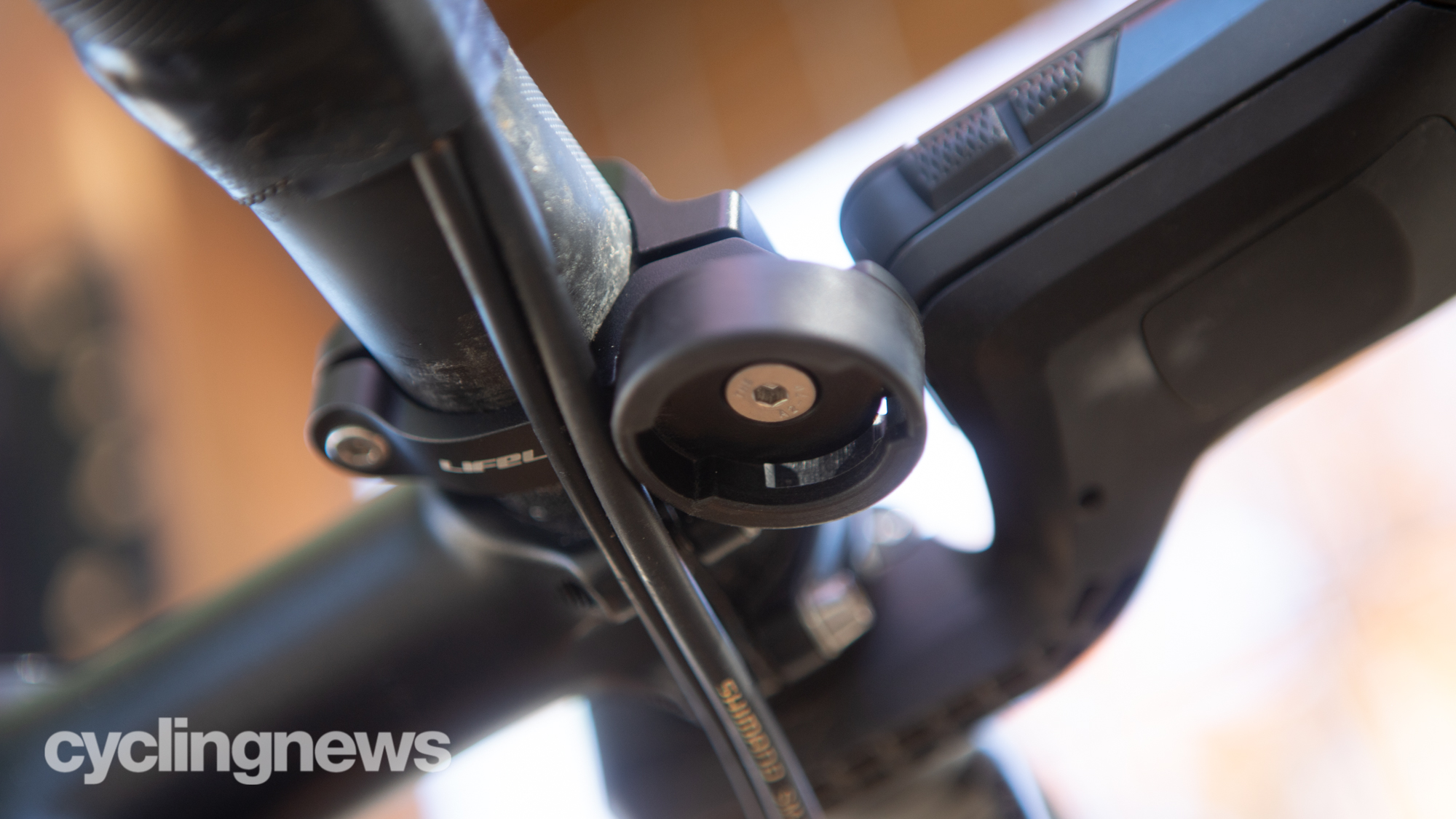
Performance
The first thing I did when this light arrived was to plug it in and get it fully charged. Behind the cut-out is an older-style micro-USB port used for charging the Samsung-sourced 8700mA lithium-ion battery. From empty, charge time will take a fairly substantial five hours - the light will change from red to blue (when the charge is above 90 per cent) and then green when fully charged.
Although there’s no fast charge option, the light can be topped up on the fly from a power bank, but as with every light that has this feature, you lose water resistance and full power will drain the battery faster than it charges. The power vs battery life is: 1h 50mins burn time at 2,000 Lumens, 3h 30 mins (1,000 Lumens), 6h 30 mins (500 Lumens), 12h (250 Lumens), 16h+ (Flashing). Meaning, even at half power you are getting almost as much power as many of the most popular lights on the market at full power. 1,000 Lumens is plenty of light for fast road cycling on dark roads.
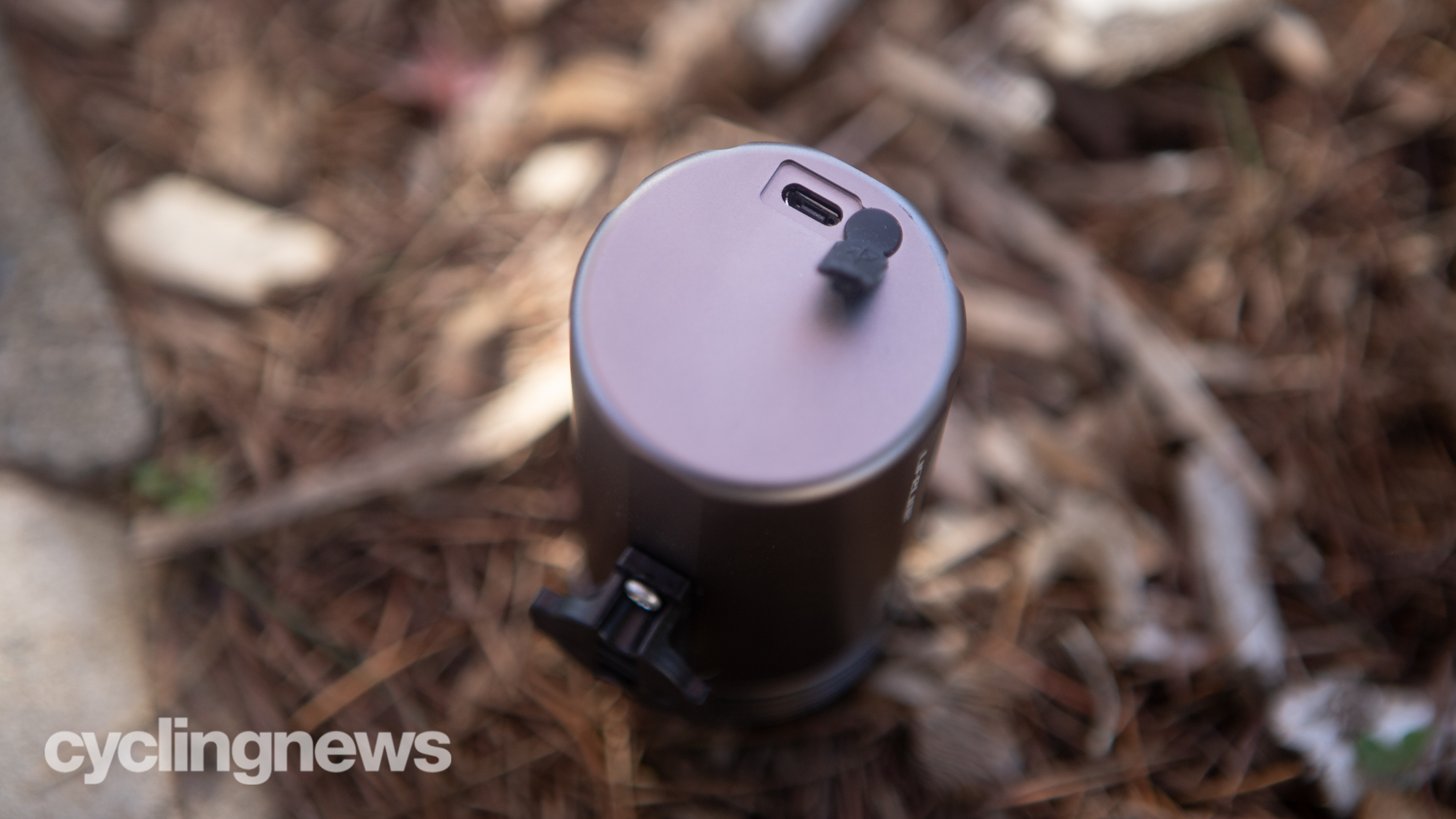
There are some issues though, starting with the mounting system. I appreciate the simplicity of the rest of the light but the mounting system holds the light back a bit. The quarter-turn plastic tabs do not seem nearly as robust as the Garmin equivalent, though so far it's worked fine. The bigger issue is the lack of mounting options.
A light such as the Bontrager Ion Pro RT makes it easy to attach over your bar tape, but the complexity of the Lifeline mounting system means you need bare bar space. You also need enough room next to your cycling computer so the two don't interfere. It's difficult to make it work, especially when you're running a front bag, but there is the option of running it upside down, under the bars.
However, mounting the light upside down revealed another challenge. To switch modes you need to hold down the power button until it indicates the change, however when you mount the light upside down, you can no longer see this indicator. While riding at night, this shouldn't be too much of an issue, since you'll be able to see your power output change with the mode, but if you're running lights in the daytime, it can be very difficult to gauge whether you've managed to switch modes or not while on the go.
Holding down the button until you think it's been long enough will inevitably just switch modes, but you'll have to stop and look at the light to turn it off. It is worth noting though that whatever mode you left it on last will remain the next time you fire it up.
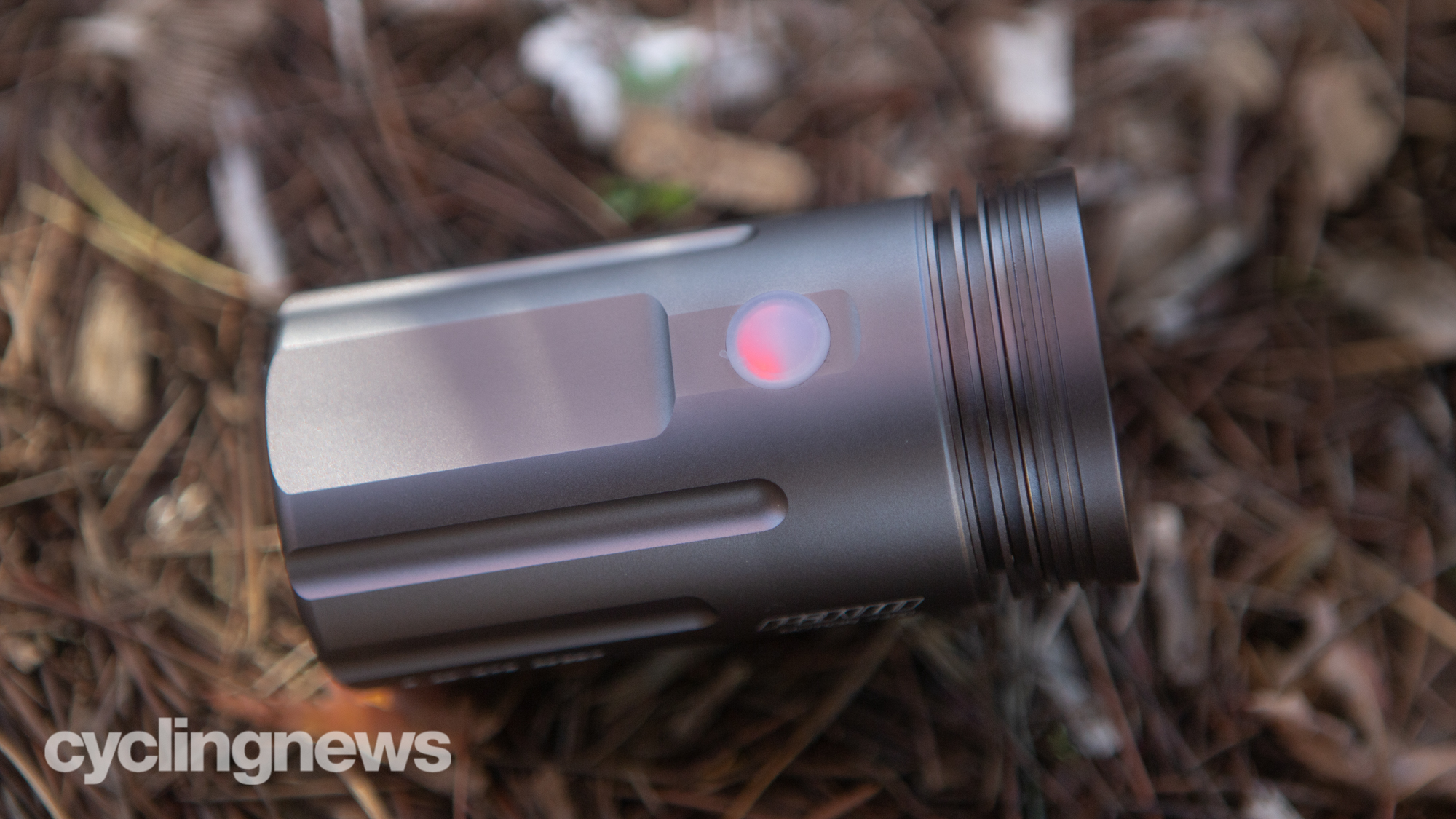
Verdict
The Lifeline Pavo Motion 2400 is a stripped-down bike light that prioritises low cost, high power output, and long battery life at the expense of features. The features you do get make sense for commuting, as well as for those looking to ride through the night. Whatever your use, there is plenty of light to see where you are going and the only issue you might need to think about is mounting - just make sure you've got enough room on your bars.
Tech Specs: Lifeline Pavo Motion 2400 Front Light
- Price: £149.99 / $169.99 / €179.39 / $264.99
- Colours: Silver Weight: 309g (actual) with mounting hardware
- Run time: 1Hr 50mins burn time at 2000 Lumens, 3Hrs 30 mins (1000 Lumens), 6Hrs 30 mins (500 Lumens), 12Hrs (250 Lumens), 16Hrs+ (Flashing)
- Battery and outputs: Constant: High = 100% / 2000 L, Medium = 50% / 1000 L, Low = 25% / 500 L, Saving Mode = 10% / 250 L MOTION CONTROL MODE: Mode 1 MC = 2400 L / 1200 L, Mode 2 MC = 1200 L / 600 L, Mode 3 MC = 600 L / 300 L
Josh hails from the Pacific Northwest of the United States but would prefer riding through the desert than the rain. He will happily talk for hours about the minutiae of cycling tech but also has an understanding that most people just want things to work. He is a road cyclist at heart and doesn't care much if those roads are paved, dirt, or digital. Although he rarely races, if you ask him to ride from sunrise to sunset the answer will be yes. Height: 5'9" Weight: 140 lb. Rides: Salsa Warbird, Cannondale CAAD9, Enve Melee, Look 795 Blade RS, Priority Continuum Onyx
